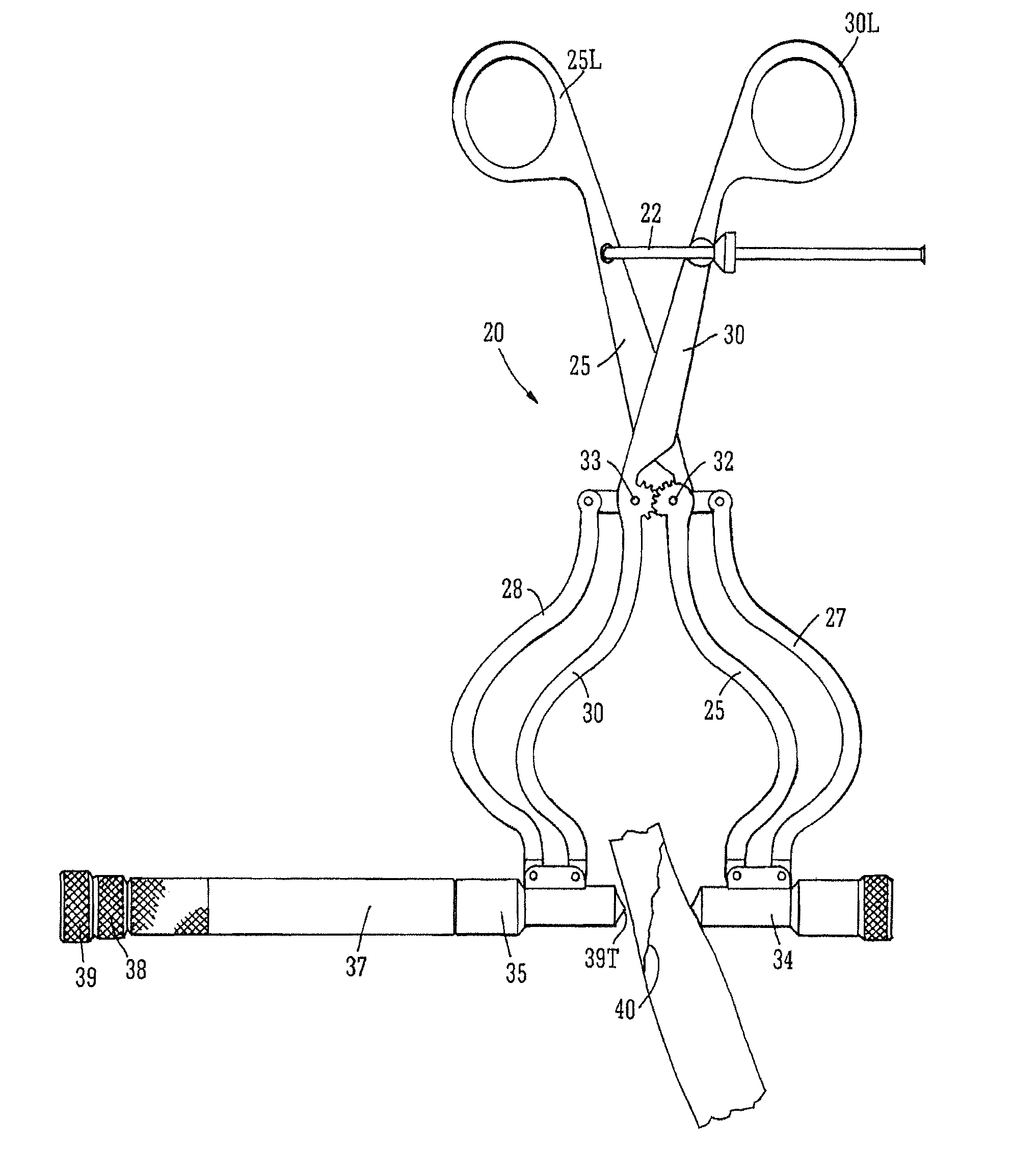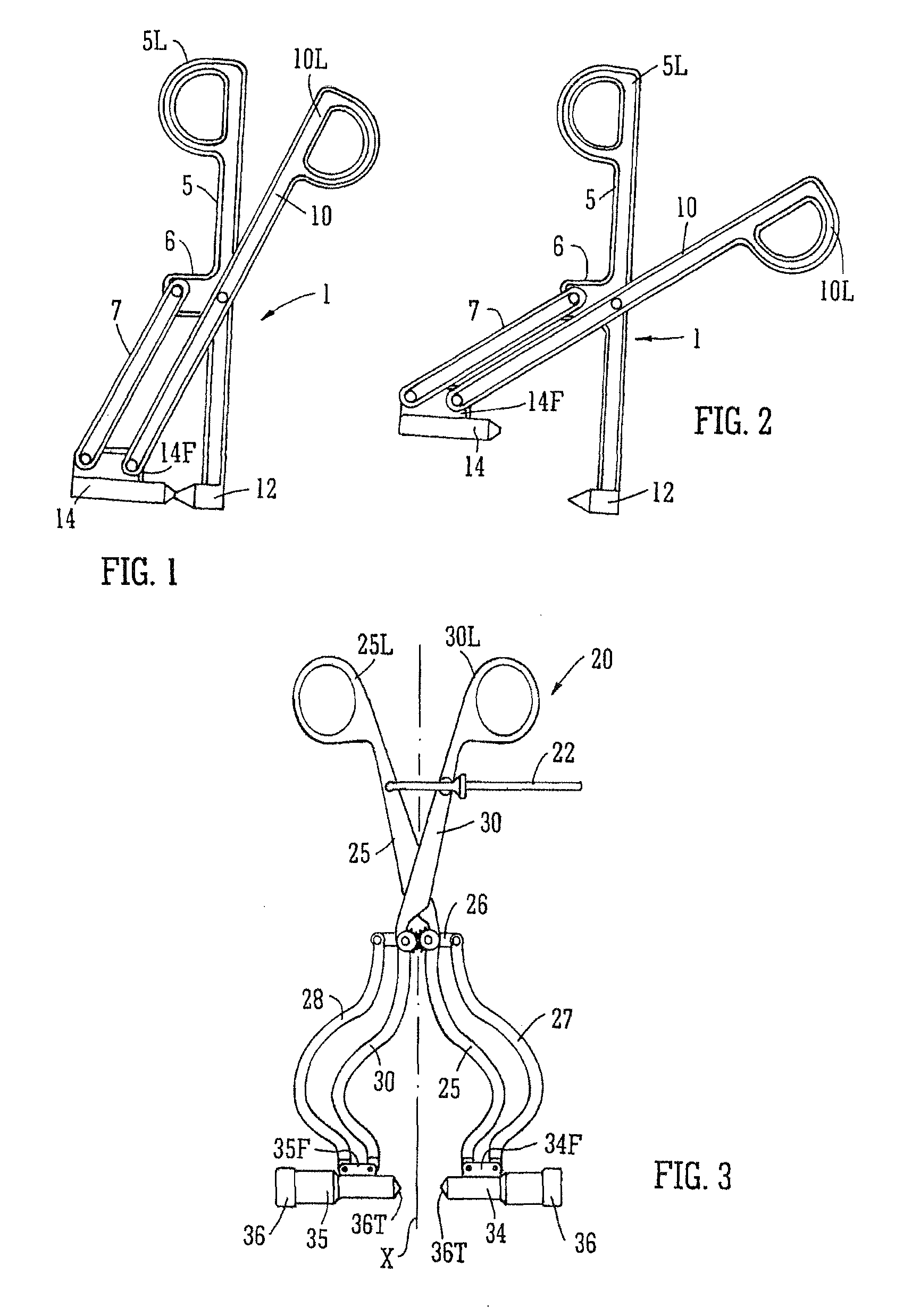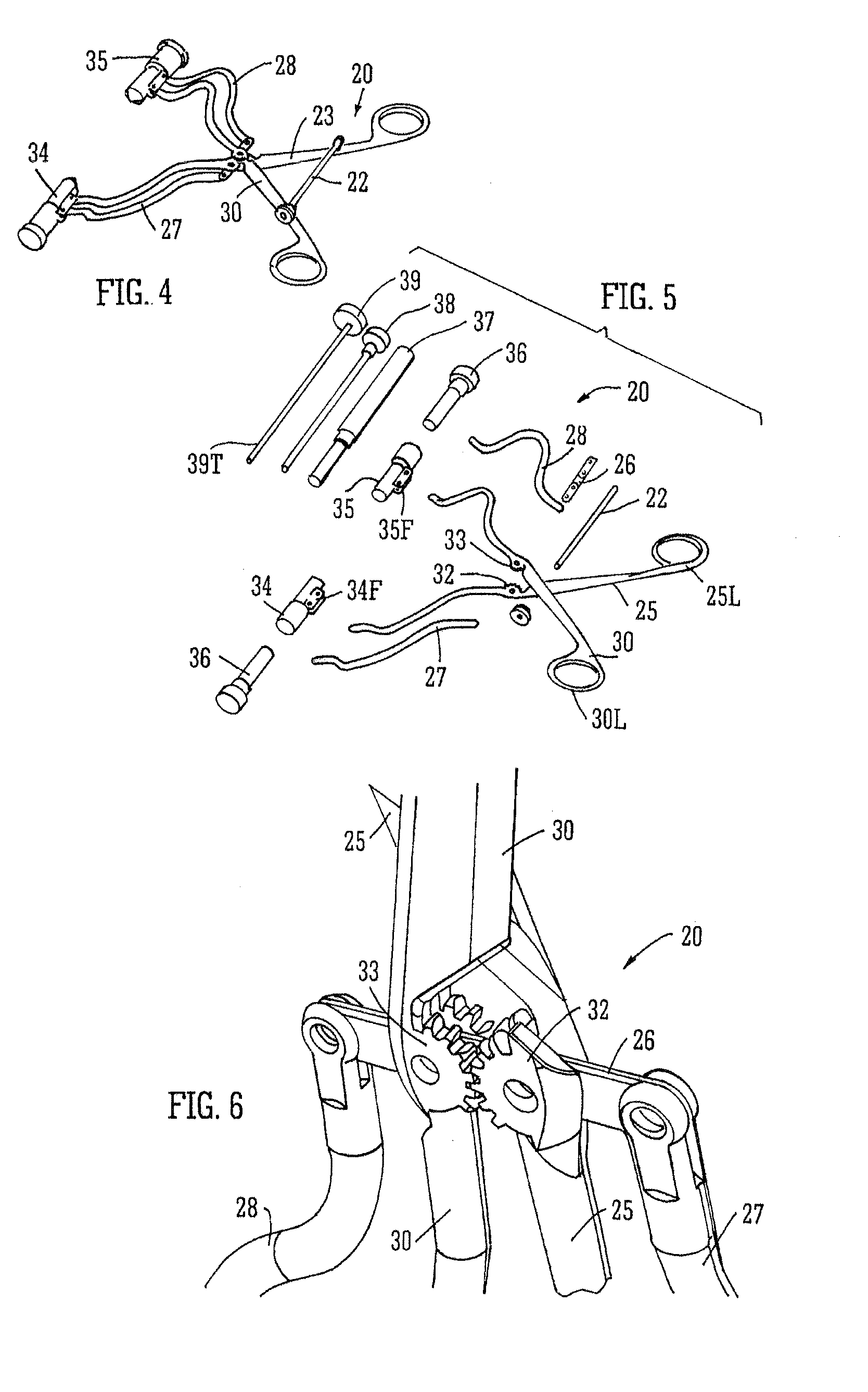Surgical guide device
a guide device and surgical technology, applied in the field of surgical guide devices, can solve the problems of small angle range, unsatisfactory positioning of fixing devices, and non-ideal healing strength of repaired bones, so as to improve the spacing of limbs, prevent tissue pinching, and improve the line of vision
- Summary
- Abstract
- Description
- Claims
- Application Information
AI Technical Summary
Benefits of technology
Problems solved by technology
Method used
Image
Examples
second embodiment
[0087]the device 20 has a respective orientation control bar 27, 28 for each limb 25, 30. As can best be seen in FIG. 6, the control bars 27, 28 are connected to the limbs 25, 30 by means of the yoke 26. The yoke 26 is pivotally connected to each of the limbs 25, 30, and to each of the control bars 27, 28 through pivot pins such as rivets or bolts or such like. The heads of the bars 27, 28, and optionally the limbs 25, 30 can be slotted to receive and retain the yoke 26 within the slot.
[0088]Optionally, the relative movement of the limbs 25, 30 and the yoke 26 around the pivot points is controlled by inter-meshing toothed members in this embodiment in the form of disc gears 32, 33, mounted respectively on limbs 25 and 30. In this embodiment, the gears 32, 33 are of similar diameter, and can be mounted on bolts extending through the pivot points between the limbs 25, 30 and the yoke 26, so that relative pivotal movement of one of the limbs (e.g. 25) initiates and controls the movemen...
third embodiment
[0101]In the third embodiment, the guide sleeves 64, 65 are typically non-identical, one of them 64 being shorter than the other 65. The shorter guide sleeve 64 can be used to access smaller spaces within the body to allow the clamp 50 to be placed appropriately around a fracture to be clamped. The smaller guide sleeve 64 can optionally accommodate a pin (not shown, but similar to pin 36) to retain the shorter sleeve on a bone surface during clamping. The longer guide sleeve 65 can be used to accommodate different sizes of insert with different diameters of bore, so that the drill can be properly supported within the bore of the guide sleeve 65 during drilling. Note that only one guide sleeve 65 is necessary in the present embodiment, and the guide sleeve 64, containing the pin, can optionally be changed for a solid pin without a sleeve, which can typically be adapted to pivot to remain in the same orientation during closing of the limbs.
[0102]In use, the guide device 50 according t...
fourth embodiment
[0108]The device 70 of the fourth embodiment has a different form of yoke 76. The yoke 76 has an inverted T shape, with a main bar 76A being retained parallel to the guide sleeves 84 by means of the orientation mechanism, a bar extension 76B slotted at 76C with a linear slot to receive a rivet 76R connecting link arms 79, which are pivotally connected together at the rivet 76R intersecting the slot 76C. The arms 79 are also pivotally connected to the limbs 75 and 80 between the loops 75L, 80L and the yoke 76.
[0109]In use, the device 70 according to the fourth embodiment is opened to the configuration shown in FIG. 14 typically to an extent sufficient to permit it to be placed around the fracture to be clamped. The handles of the limbs 75, 80 are pressed together to close the guide sleeves 84, 85 around the fracture.
[0110]Instead of using gears to coordinate the separation of the limbs 75, 80, the device 70 of the fourth embodiment uses the link arms 79, while the orientation bars 78...
PUM
 Login to View More
Login to View More Abstract
Description
Claims
Application Information
 Login to View More
Login to View More - R&D
- Intellectual Property
- Life Sciences
- Materials
- Tech Scout
- Unparalleled Data Quality
- Higher Quality Content
- 60% Fewer Hallucinations
Browse by: Latest US Patents, China's latest patents, Technical Efficacy Thesaurus, Application Domain, Technology Topic, Popular Technical Reports.
© 2025 PatSnap. All rights reserved.Legal|Privacy policy|Modern Slavery Act Transparency Statement|Sitemap|About US| Contact US: help@patsnap.com



